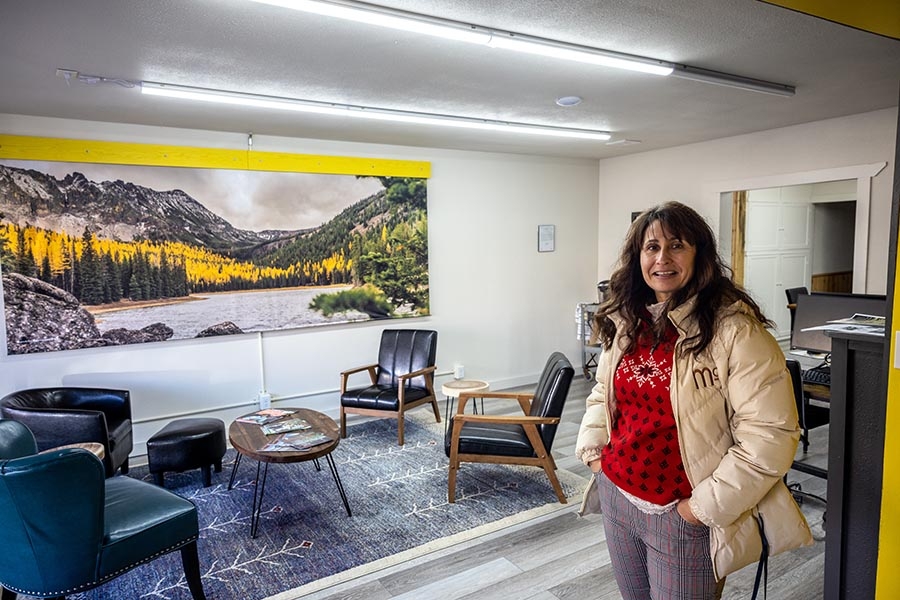Part coworking space, part old-school cyber cafe, Grant County’s cybermills help residents and travelers in the county work, learn and connect.
Liz Lovelock does a little bit of everything. Originally from Massachusetts, Lovelock moved to Grant County 13 years ago for a job as a student trainee in geology at the John Day Fossil Beds National Monument.
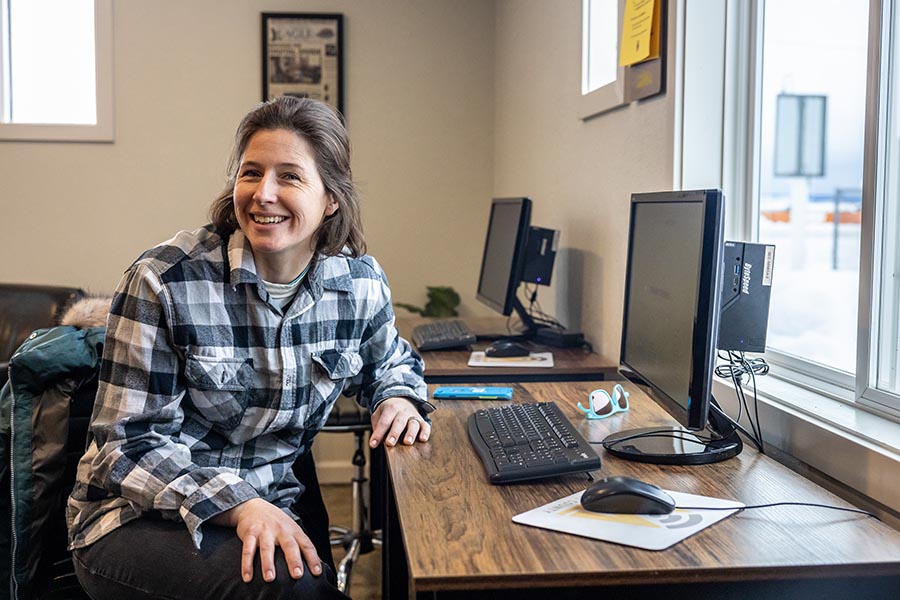 Seneca resident Liz Lovelock makes use of the cybermill. Photo by Jason E. Kaplan
Seneca resident Liz Lovelock makes use of the cybermill. Photo by Jason E. Kaplan
More recently, she worked at the Silvies Valley Ranch Retreat outside Seneca. She’s also an artist and has been “pretending to be a singer/songwriter — but I actually got a gig, so I can say I’m a professional musician.”
She uses the Seneca CyberMill for everything, she says: looking up and printing guitar chords to learn new music, attending telehealth appointments, attending parent-teacher conferences and taking online classes — most recently to get an Oregon Liquor and Cannabis Commission server’s license.
The Seneca CyberMill is one of two institutions like it in Grant County; economic development officials are currently developing a third in John Day.
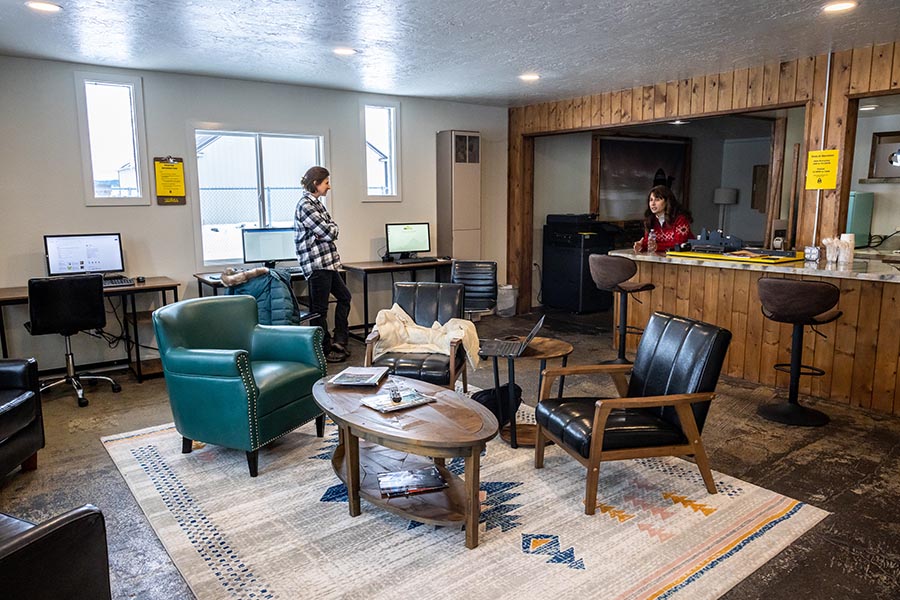 Liz Lovelock, left, and Didgette McCracken in Seneca’s cybermill. Photo by Jason E. Kaplan
Liz Lovelock, left, and Didgette McCracken in Seneca’s cybermill. Photo by Jason E. Kaplan
They are the brainchild of Didgette McCracken, Oregon State University’s open campus coordinator for Grant County, and Allison Field, then the economic development coordinator for Grant County. McCracken conceived of the cybermill concept in 2018. They’re spaces where members of the public can easily access the internet, charge devices and print documents. It’s a simple concept, but residents say these spaces have served as a lifeline for their communities, where consistent internet access is rare.
In many parts of the country — including more populated parts of Oregon — it’s easy to take for granted the presence of coffee shops and libraries with reliable internet access, not to mention coworking spaces for remote workers.
Grant County, though, is Oregon’s fourth least-populous county, recording a population of 7,233 in the 2020 census.
A 2019 Federal Communications Commission report noted that the digital divide shrank considerably in the years between 2015 and 2019, with 82.7% of rural areas reporting 25/3 mbps deployment (the minimum speed the FCC defines as “broadband”) versus 61.5% in 2015. Those percentages still lag far behind the rest of the country, however: In 2019, 95.6% of Americans lived in areas with broadband access.
Those numbers also don’t tell the whole story. A January audit from Secretary of State Shemia Fagan’s office pointed out that the FCC’s geographic data are based on information from the U.S. Census Bureau, which measures access by census block — numbers that “may not be sufficiently granular to give an accurate picture of broadband coverage.”
“If a single home in a census block can get broadband, the entire block is considered served, despite how many other homes without broadband access may exist. In rural areas, these blocks may stretch miles. The flawed maps present a big problem as the government tries to distribute broadband funding,” the report notes. The state of Oregon is expected to receive between $400 million and $1 billion in federal funds to improve broadband access for underserved communities.
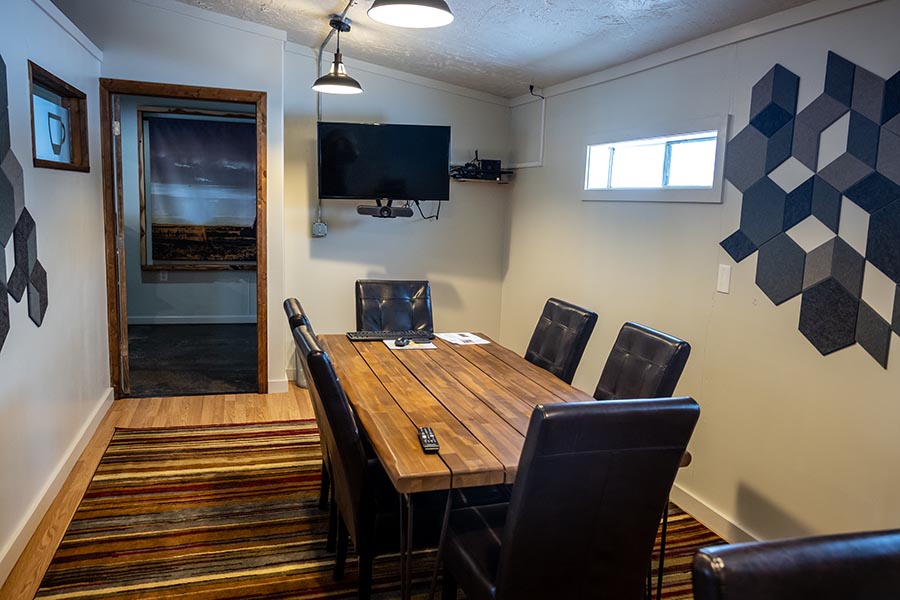 A private conference room in Seneca’s cybermill. Photo by Jason E. Kaplan
A private conference room in Seneca’s cybermill. Photo by Jason E. Kaplan
According to survey data from the Grant County CyberMill, just 61% of Grant County residents have access to high-speed internet. In Seneca, where Lovelock lives, even cellphone service is inconsistent: She had to call me from a landline to do our interview, after her cellphone abruptly dropped a call. The Seneca CyberMill opened early last year; the town recorded a population of 199 during the 2020 census. Prairie City, where the second cybermill opened in fall 2022, has a population of 848.
John Day’s only coffee shop went under during the COVID-19 pandemic, McCracken says.
“Our need for meeting space and just a place with public Wi-Fi is great because we don’t have those amenities,” McCracken says. “In Seneca we had people parking outside their minimart because they had Wi-Fi access.”
McCracken notes that there is a county library in John Day — that’s 20 miles from Seneca — but its hours are somewhat limited, and there isn’t much space for some of the things she wanted the space to be accessible for, such as private calls.
Both facilities offer a private conference room with a microphone, speakers and a camera; three publicly accessible computers; a printer/copier/scanner; coffee and a minifridge; and Wi-Fi with speeds up to 100 mbps.
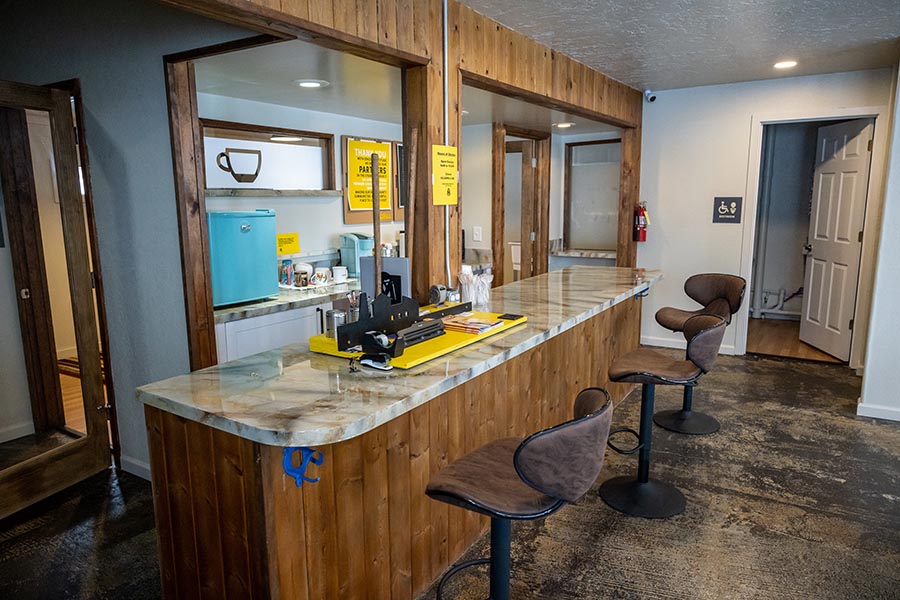 Seneca’s cybermill. Photo by Jason E. Kaplan
Seneca’s cybermill. Photo by Jason E. Kaplan
McCracken’s interest in bridging that divide was an outgrowth of her work with OSU. In theory, rural students could attend OSU through distance learning. In practice, many lacked computers and internet access. Economic development officials were interested in the business-development side — specifically in projects that could attract and retain solo entrepreneurs.
Then the COVID-19 pandemic hit. Service-oriented businesses like coffee shops and restaurants shuttered, in many cases for good. Schools went online, and so did a lot of white-collar work — putting isolated and low-income people in a position to scramble for internet access just to do basic activities.
“My side has been it’s really important for businesses and folks within our community to have a landing space,” says Tory Stinnett, who stepped into her role as Grant County economic development director in 2020.
The “cybermill” name was the result of what McCracken describes as a “pretty extensive branding process” with the Portland-based design firm Ditroën.
“We needed something new but wanted something that fit our culture,” McCracken explained in an email to Oregon Business. The logo includes an illustration of an old kiln dryer, which is located in Seneca and is part of the lumber mill there; the name is both a nod to Grant County’s history with the timber industry and also explains the newly available services. “Mill is a ‘place’ that is familiar to our landscape.”
Now, McCracken and Stinnett say, the project is more popular than they could have imagined, and people are using the spaces in ways they didn’t foresee.
“It’s surpassed our expectations by a long ways,” McCracken tells OB.
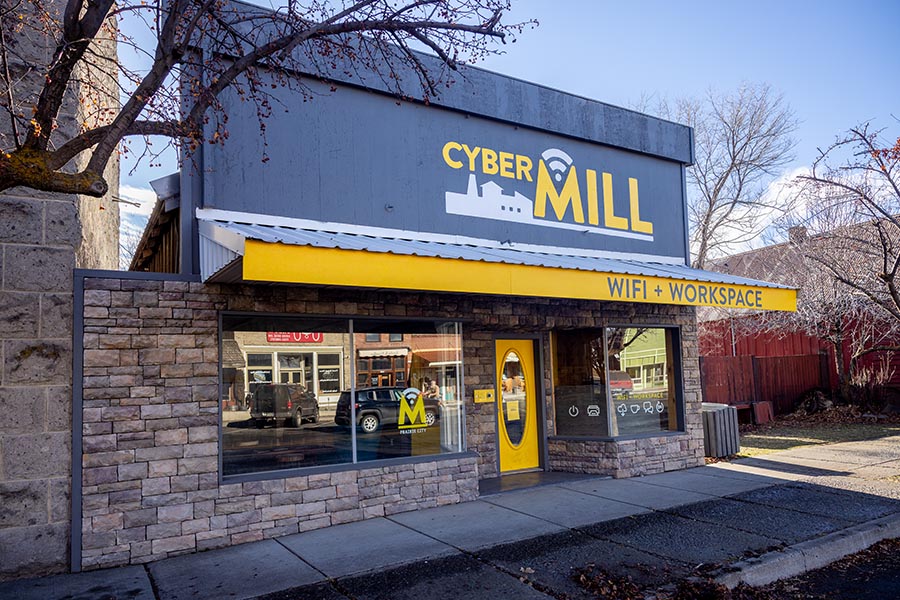 Prairie City’s cybermill. Photo by Jason E. Kaplan
Prairie City’s cybermill. Photo by Jason E. Kaplan
While the concept of the cybermill isn’t exactly new — in some ways it hearkens back to the cyber cafes that began cropping up around the country in the 1990s, and in some ways to the coworking spaces that have become popular in more recent years — there are a few things that make the Grant County sites unique.
One is the model: The cybermills are membership-based, and membership is free, though members do have to pay for color printing. Prospective members fill out a short survey on the Grant County CyberMill website and are assigned a personal identification number they can use to access the sites. As of mid-January, the Seneca CyberMill had 217 members — that is, there are more cybermill members than residents in the town.
That’s because some of the members are tourists who stop in at the space to check email or participate in a Zoom call. McCracken also says she’s heard from part-time residents of Grant County — that is, people who have vacation homes there — that they love being able to do business while visiting.
According to data compiled and released by McCracken, in the period between Dec. 16, 2022, and Jan. 16, 2023, a majority of those who accessed the Seneca CyberMill had ZIP codes in Burns; a plurality (just under 50%) were between the ages of 25 and 34, and most had attended some college.
Finally, a key difference between the cybermills and the bank of publicly accessible computers at a public library — or a coffee shop — is that in 2023 people don’t use the internet the way they did in the 1990s, or, for that matter, five years ago.
Lovelock, for example, has visited the cybermill for telehealth appointments with providers in Fossil and Central Oregon — appointments that, just a few years ago, she would have had to drive an hour or more for. Lovelock is also going through a divorce and has used the facility for video meetings with her attorney. She also has two children in grade school and has attended parent-teacher conferences online.
So the cybermills include private conference rooms where one can have a private conversation.
“Restaurants are restaurants,” McCracken says. “If you have a private conversation, it’s probably not private. We definitely lack those amenities.”
The year-to-year operating cost for each cybermill is about $20,000, according to McCracken. Startup costs are higher: McCracken says it cost $50,000 to get each of the existing sites up and running, but the John Day CyberMill will cost about $1 million in startup funds, in part because the facility is so much larger and is in significant disrepair.
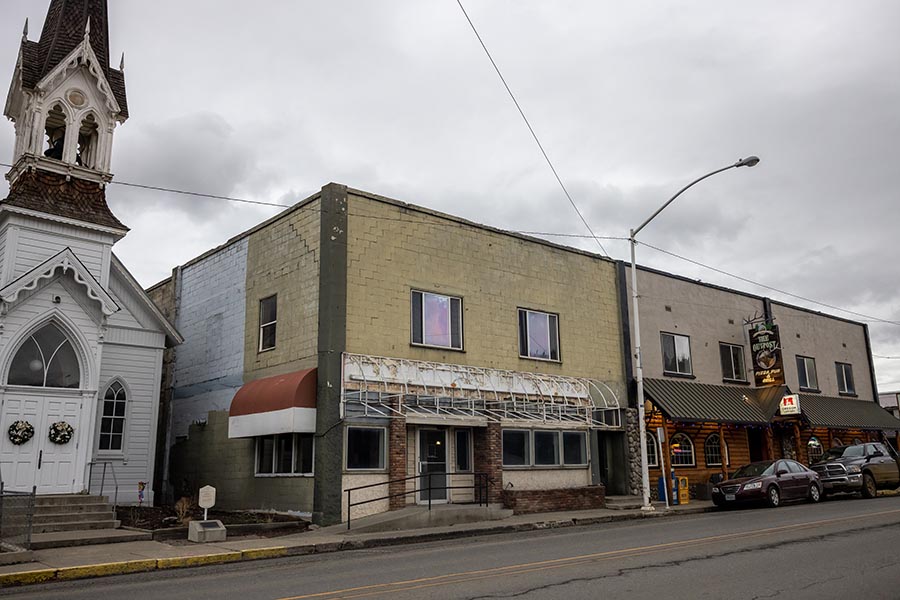 Cybermill-to-be in John Day. Photo by Jason E. Kaplan
Cybermill-to-be in John Day. Photo by Jason E. Kaplan
The cybermill project is funded primarily through private grants and donations, McCracken says, with the Oregon Community Foundation and the Ford Family Foundation offering grant funding. Grant County Digital and the Prairie City School District have also provided grant funding to the site, and Prairie City has pledged CARES Act funding to keep the Prairie City facility going.
“The goal is to keep it so that folks don’t have to pay,” Stinnett says. According to Stinnett, McCracken has already found enough sponsors to keep the mills operating for the next year.
“The coolest thing about the cybermill is that it’s created within our community,” Stinnett says. Often, in Eastern Oregon, “people feel like things happen to them” — things outsiders dreamed up without community input.
“It’s been all positive. I’ve seen people in there that I wouldn’t even think would be using it,” says Grant County Commissioner Jim Hamsher, who also served as Prairie City’s mayor until January. “I also see people that are using it as a gathering place, so that’s nice as well.”
Lovelock moved to Seneca in June. She didn’t have a landline at first, and relied on the cybermill for pretty much all communication with the outside world.
And in fact, the presence of the cybermill had a significant impact on her decision to remain in Seneca. She had considered moving to Monument, but “it just doesn’t have the same resources.”
“I’m still surprised about the amazing community that’s been around it,” Stinnett says. “For me it gives me chills that people are so excited and are using it.”
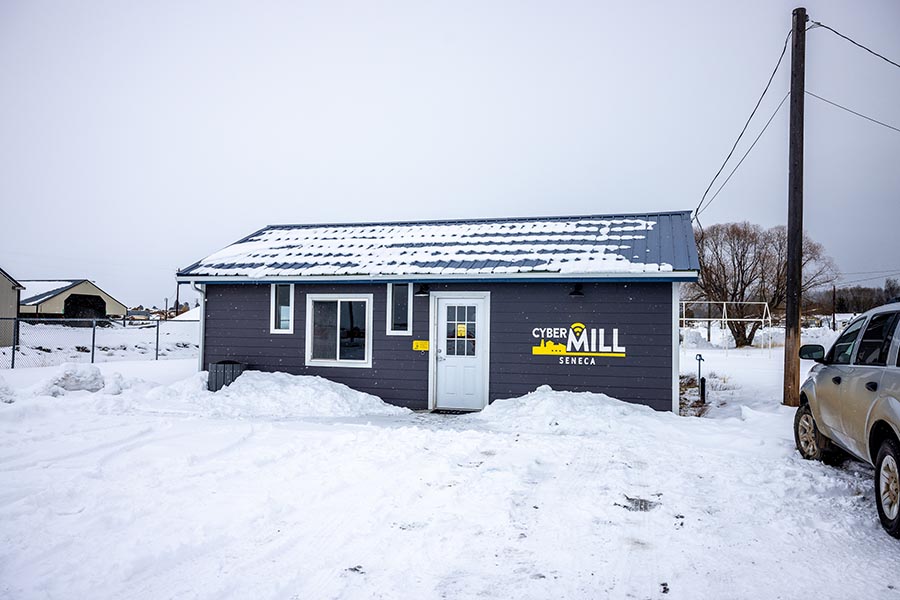 The exterior of Seneca’s cybermill. Photo by Jason E. Kaplan
The exterior of Seneca’s cybermill. Photo by Jason E. Kaplan
“I walk to the cybermill — it’s, like, four blocks from my house,” Lovelock says. “There’s this guy that I walked by, he’s shoveling his driveway while I’m walking there. We chat and I told him what I was doing, and he’s like, ‘Oh, do they, like, need some help over there? I have an ATV with a plow. I could go plow [the driveway at the cybermill].’ I was like, ‘Sure, thank you.’ I feel like the community cares about it — even people that don’t personally use it. Because they know it’s something good for the community.”
To subscribe to Oregon Business, click here.


